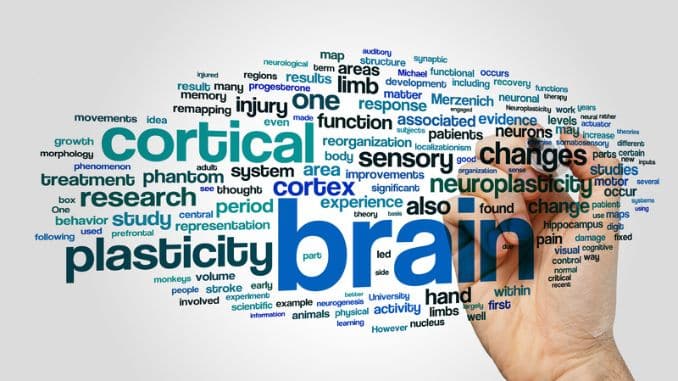Neuroplasticity exercises for brain injury is a big help for people who have suffer brain injury. Until about 20 years ago, many psychologists believed that the brain was not flexible. They thought that once a person reached adulthood, the brain also stopped growing and that the neurons progressively died until we ourselves perished. In actuality, our brain is comprised of over 100 billion neurons with about 100 trillion connections; there are Glial cells and the dendrites which build up when we learn something new. This brain phenomenon is called “Neuroplasticity”. Every time we learn something new, we grow new dendrites.
And each time we learn something new and create a new habit, those neurons talk to each other and reform pathways. If an accident occurs that may result in a loss, other brain areas with more vital roles, as scientists say, take over that area. There are neuroplasticity exercises for brain injury you can do to help improve neuronal pathways, grow dendrites, and essentially modify the brain.
Try This Simple Test at Home:
Begin in an upright seated position. Take one of your fingers – it doesn't matter which one – and hold it in front of your face.

Now slowly revolve a finger from your opposite hand around your steady finger in a circular motion.

Most people should be able to do this without any problems.
The next step, however, is far more challenging. Start moving your steady finger in the opposite direction around your revolving finger. One should be moving in a forward direction while the other is moving in a backward direction. After a few rotations, reverse directions. Try to do this in a smooth manner, without breaking the pattern.
While some people can easily accomplish this task, likely 90% are unable.
So, What's Happening?
The answer is in our brain hemispheres and how both the left and right sides are communicating when we try to do this simultaneously. One side typically takes control, so it can be difficult to execute opposite rotations at the same time. When your finger is moving in a single direction, one of your hemispheres is slightly dominating, and that one takes control, making it difficult, if not near impossible, to comprehend an opposite route at the same time. Again, this encourages brain neuroplasticity.

Another Activity to Challenge Your Brain & Encourage Brain Neuroplasticity:
If you wear a watch, try to take it off and put it on the other wrist. Moving that watch strap will test your motor coordination.
This task may be challenging because you're used to fastening your watch strap with your dominant hand.
Thus, we can say that finger dexterity has a neurological link in our brain. When you flip it, you will realize that manipulating your fingers as you did on the other hand will be difficult, (unless you’re already ambidextrous.) For a week, try to wear your watch on your dominant hand. It may feel awkward; your brain will literally tell you to “fix it ASAP”. Now, why Is this strange feeling so annoying?
Let’s challenge your brain a bit more – try brushing your teeth with your non-dominant hand. Using your non-dominant hands while doing everyday activities can feel like brain gymnastics! Basically, what you’re doing is stimulating neuroplasticity by performing your daily activities using your non-dominant hand.
If you normally go up the stairs stepping first with the same foot, try switching it up and actively doing the opposite. You'll be shocked at how awkward it feels.

Make your Brain More Fit through Brain Neuroplasticity!
Don't just focus on your muscles, start challenging your brain and encouraging brain neuroplasticity today.
- Learn a new language
- Learn an instrument
- Learn a new hobby
- Learn new skills
The journey to a new habit can be tough, but the rewards are worth it. Building healthy habits takes time and effort. It can take 30 days for some people, but 45 to 60-day commitments work best. Remember that every successful transformation begins with an idea and then moves to action, and every new habit builds a new brain route. All of this positively alters your brain. In fact, studies done on brain scans of people on their deathbeds showed that they were still developing new neurons. So, go out and do something new today to stretch your brain and have fun. Always keep your mind sharp and active, as it could go a long way in preserving your quality of life.
Want to decrease brain fog and stay focused and alert? Click here to learn how.





